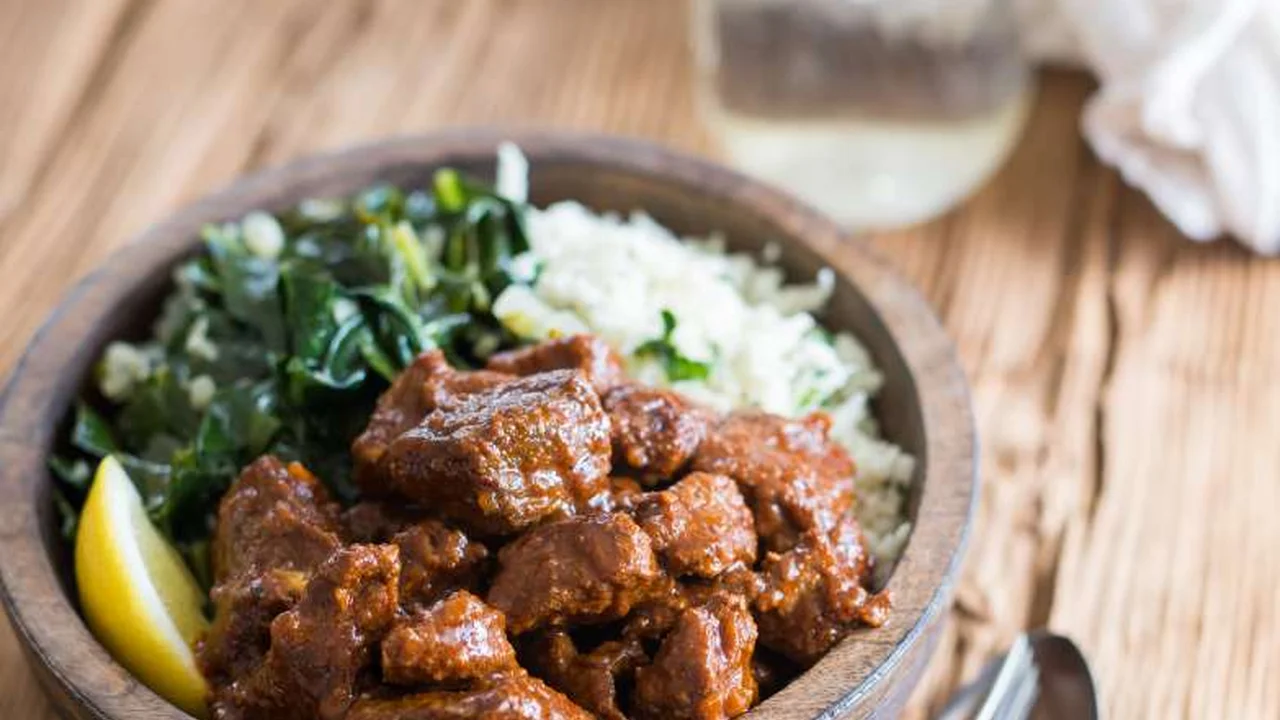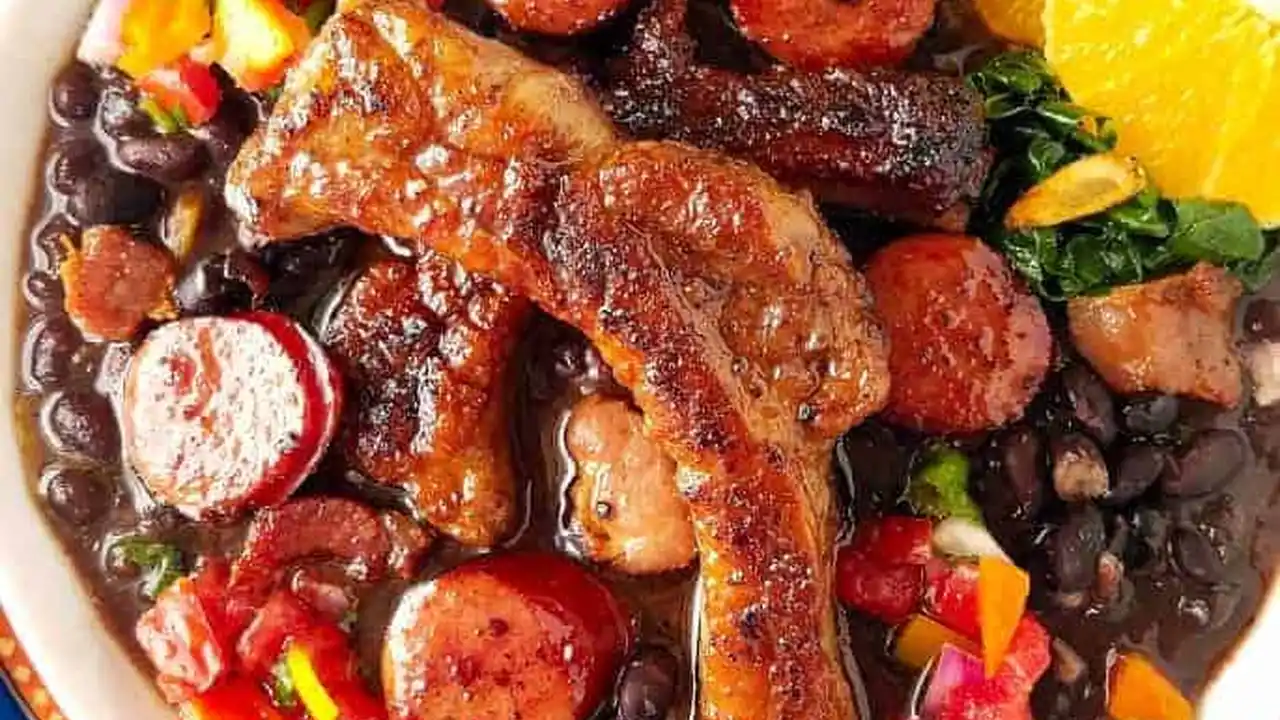7 Best Ethiopian Stew Recipes Spicy and Flavorful
Experience the spicy and flavorful world of Ethiopian stews with these 7 delicious recipes. Served with injera bread, these dishes are perfect for sharing. Enjoy a unique and flavorful Ethiopian meal at home.

What Makes Ethiopian Stews So Special?
Ethiopian stews, often called "wats," are a cornerstone of Ethiopian cuisine. What sets them apart is their unique blend of spices, slow cooking methods, and the use of berbere, a complex spice blend that is the heart and soul of many Ethiopian dishes. These stews are traditionally served with injera, a spongy, slightly sour flatbread made from teff flour. Injera acts as both a plate and a utensil, used to scoop up the flavorful stews.
The slow cooking process allows the flavors to meld together, creating a depth and richness that is hard to replicate with other cooking methods. Ethiopian stews are also incredibly versatile, with variations featuring different meats, vegetables, and legumes. Whether you're a meat-lover or a vegetarian, there's an Ethiopian stew out there for you.
Key Ingredients in Authentic Ethiopian Wats
Before diving into specific recipes, let's explore some key ingredients that contribute to the distinctive flavor of Ethiopian stews:
- Berbere: This is the star of the show. Berbere is a complex spice blend that typically includes chili peppers, garlic, ginger, basil, korarima, rue, ajwain or radhuni, nigella, and fenugreek. The exact ingredients and proportions vary from region to region and even from family to family, making each berbere blend unique.
- Niter Kibbeh: This is a clarified butter infused with herbs and spices. It adds a rich, nutty flavor to the stews. Common spices used in niter kibbeh include garlic, ginger, turmeric, and koseret (Ethiopian oregano).
- Injera: The spongy flatbread made from teff flour. It's essential for serving and eating the stews.
- Onions, Garlic, and Ginger: These aromatics form the base of many Ethiopian stews, providing a savory and pungent foundation.
- Tomatoes: Often used to add acidity and sweetness to the stews.
- Vegetables: Common vegetables used in Ethiopian stews include potatoes, carrots, lentils, collard greens, and cabbage.
- Meats: Popular meat choices include chicken, beef, lamb, and goat.
7 Delicious Ethiopian Stew Recipes to Try at Home
Ready to embark on a culinary adventure? Here are 7 of the best Ethiopian stew recipes you can easily make at home:
1. Doro Wat: The Quintessential Chicken Stew
Doro Wat is perhaps the most famous Ethiopian stew. It's a rich, flavorful chicken stew made with berbere, niter kibbeh, onions, garlic, ginger, and hard-boiled eggs. The chicken is often simmered for hours, allowing it to become incredibly tender and infused with the complex flavors of the spices.
Key Ingredients: Chicken, berbere, niter kibbeh, onions, garlic, ginger, hard-boiled eggs, tomato paste.
2. Siga Wat: A Hearty Beef Stew
Siga Wat is a hearty beef stew that is similar to Doro Wat but uses beef instead of chicken. It's often made with tougher cuts of beef that benefit from the long, slow cooking process, resulting in a tender and flavorful stew.
Key Ingredients: Beef (such as chuck roast), berbere, niter kibbeh, onions, garlic, ginger, tomato paste.
3. Misir Wat: A Flavorful Lentil Stew
Misir Wat is a popular vegetarian stew made with red lentils. It's a flavorful and protein-rich dish that is often served during fasting periods in the Ethiopian Orthodox Church. The lentils are cooked with berbere, onions, garlic, and ginger, creating a spicy and satisfying stew.
Key Ingredients: Red lentils, berbere, onions, garlic, ginger, vegetable oil.
4. Kik Alicha: A Mild Yellow Pea Stew
Kik Alicha is a mild and comforting stew made with yellow split peas. Unlike many other Ethiopian stews, it doesn't contain berbere, making it a good option for those who prefer less spicy dishes. It's often flavored with turmeric, ginger, garlic, and onions.
Key Ingredients: Yellow split peas, turmeric, ginger, garlic, onions, vegetable oil.
5. Gomen Wat: A Nutritious Collard Greens Stew
Gomen Wat is a nutritious and flavorful stew made with collard greens. It's often cooked with onions, garlic, ginger, and spices, creating a healthy and satisfying dish. It's a great way to get your daily dose of greens!
Key Ingredients: Collard greens, onions, garlic, ginger, vegetable oil.
6. Atakilt Wat: A Vegetable Medley Stew
Atakilt Wat is a simple and versatile stew made with a variety of vegetables, such as potatoes, carrots, and cabbage. It's often flavored with turmeric, ginger, garlic, and onions. It's a great way to use up leftover vegetables and create a healthy and satisfying meal.
Key Ingredients: Potatoes, carrots, cabbage, turmeric, ginger, garlic, onions, vegetable oil.
7. Shiro Wat: A Creamy Chickpea Stew
Shiro Wat is a creamy and flavorful stew made with ground chickpeas or broad beans. It's a popular vegetarian option that is often served during fasting periods. The shiro powder is cooked with onions, garlic, ginger, and spices, creating a rich and satisfying stew.
Key Ingredients: Shiro powder (ground chickpeas or broad beans), onions, garlic, ginger, vegetable oil.
Making Injera at Home: A Step-by-Step Guide
No Ethiopian meal is complete without injera! While it can be a bit challenging to make at home, it's definitely worth the effort. Here's a basic recipe:
Ingredients:
- Teff flour
- Water
- Yeast (optional, for a slightly sour flavor)
Instructions:
- Mix the teff flour with water to create a batter that is similar to pancake batter.
- If using yeast, add a small amount to the batter and let it sit for a few hours to ferment.
- Heat a large, flat griddle or crepe pan over medium heat.
- Pour a thin layer of batter onto the griddle, spreading it out evenly.
- Cook for a few minutes until bubbles form on the surface and the injera is cooked through.
- Remove the injera from the griddle and let it cool.
Where to Buy Ethiopian Spices and Ingredients Online
Finding authentic Ethiopian spices and ingredients can sometimes be a challenge, especially if you don't live near an Ethiopian grocery store. Fortunately, there are several online retailers that specialize in Ethiopian food products. Here are a few recommendations:
- Brundo Spice Company: This company offers high-quality berbere and other Ethiopian spice blends. They source their spices directly from Ethiopia and are committed to ethical and sustainable practices. A jar of their berbere typically costs around $15-$20.
- Ethiopian Food Store: This online store sells a wide variety of Ethiopian food products, including teff flour, niter kibbeh, shiro powder, and other essential ingredients. Prices vary depending on the product.
- Amazon: You can also find a selection of Ethiopian spices and ingredients on Amazon, although the quality and authenticity may vary. Be sure to read reviews carefully before making a purchase.
Recommended Products for Preparing Ethiopian Food
To make your Ethiopian cooking experience even easier, here are a few recommended products:
- Large Flat Griddle or Crepe Pan: This is essential for making injera. A non-stick griddle is ideal for easy cleanup. You can find a good quality griddle for around $30-$50.
- Ethiopian Clay Pot (optional): While not essential, cooking your stews in a traditional Ethiopian clay pot can add an authentic touch. These pots can range in price from $50-$100.
- Spice Grinder: If you plan on making your own berbere, a spice grinder is a must-have. A good quality spice grinder can cost around $20-$40.
Different Berbere Blends Compared: Which One is Right for You?
Berbere is not a one-size-fits-all spice blend. Different regions and families have their own unique variations. Here's a comparison of a few popular berbere blends:
- Traditional Berbere: This is the most common type of berbere. It typically includes chili peppers, garlic, ginger, basil, korarima, rue, ajwain or radhuni, nigella, and fenugreek. It has a complex flavor with a moderate level of heat.
- Spicy Berbere: This blend has a higher proportion of chili peppers, making it significantly spicier than traditional berbere. If you like your food with a kick, this is the berbere for you.
- Mild Berbere: This blend has a lower proportion of chili peppers and may include other spices that mellow out the heat, such as turmeric or cardamom. It's a good option for those who prefer less spicy dishes.
When choosing a berbere blend, consider your spice tolerance and the specific recipe you're making. Some recipes may call for a specific type of berbere, so be sure to read the instructions carefully.
Serving Suggestions and Side Dishes for Ethiopian Stews
Ethiopian stews are typically served with injera, which is used to scoop up the stew. You can also serve them with other side dishes, such as:
- Ethiopian Salad: A simple salad made with tomatoes, onions, and green peppers, dressed with a vinaigrette.
- Azifa: A lentil salad made with brown or green lentils, onions, green peppers, and a lemon vinaigrette.
- Ethiopian Cheese (Ayib): A fresh, crumbly cheese that is similar to cottage cheese.
When serving Ethiopian stews, be sure to provide plenty of injera! It's also a good idea to offer a variety of side dishes to complement the flavors of the stews.
:max_bytes(150000):strip_icc()/277019-baked-pork-chops-with-cream-of-mushroom-soup-DDMFS-beauty-4x3-BG-7505-5762b731cf30447d9cbbbbbf387beafa.jpg)






